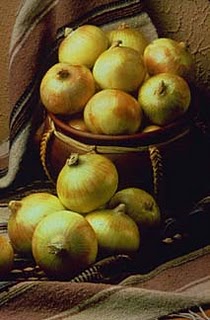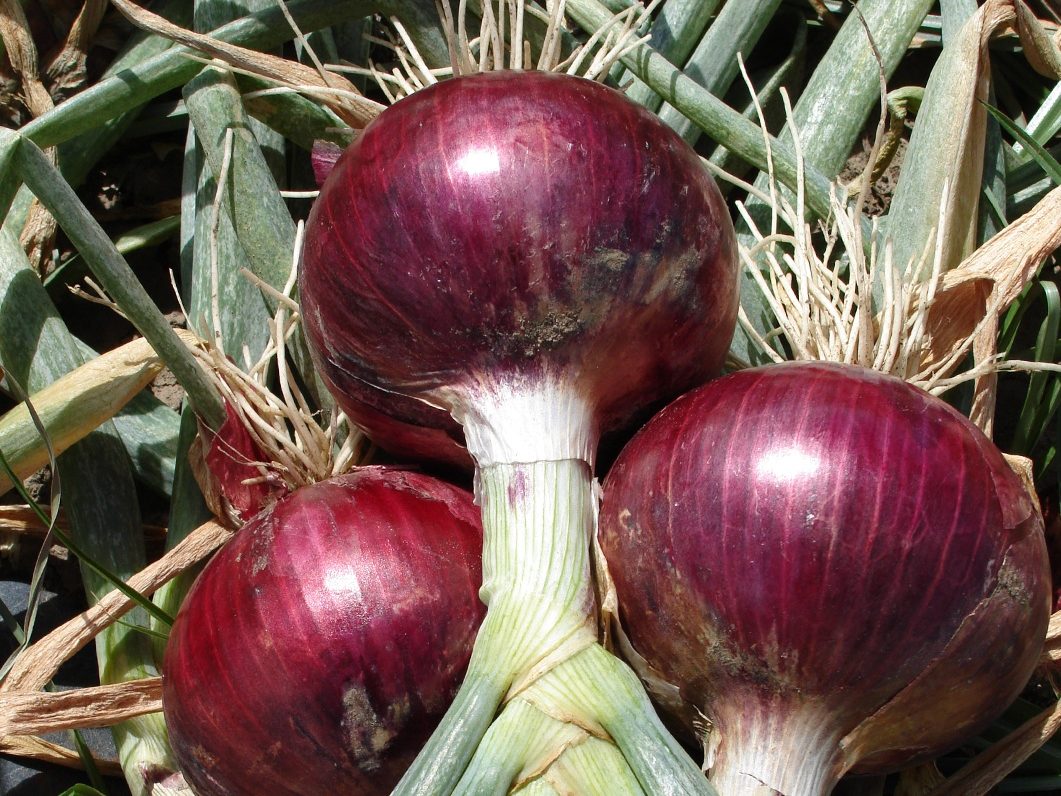Featured image: Red onions, Courtesy Crescent City Fruit Frontera
With demand for large-medium sizes increasing and crop reports indicating good progress to date, 2020 is dawning on a positive note for Texas onions.
Our friend Dante Galeazzi, CEO/President of the Texas International Produce Association headquartered in Mission, told us in December his state’s onion industry has risen to the challenge of changes in consumer preferences.

“Texas onions have seen more and more demand for large-medium sized onions, especially for programs focused on smaller consumer bags like 2-lbs, 3-lbs, and 5-lbs bags,” Dante said. “Texas onions were typically sought after for their size and flavor, but as the American consumer and their consumption habits have changed, the industry has adapted – and quickly – to answer that demand.”
He continued, “And many growers continue to experiment with new onions varieties for many reasons, although most of those reasons are focused on expanding the growing window. Texas has a competitive advantage over many areas in that our winters still experience 70-80 degree days. The flip side is our summers can have 100+ degrees for months in a row, so it makes it hard to plant too early or keep the onions in the field too late.”
Part of the adaptations made by growers, he said, are in varieties. “We look to experiments such as heat-tolerant varieties, planting practices, and variations in curing,” Dante said, adding, “Regardless of experiments, Texas onions have a certain mild flavor profile that our growers try and maintain. That flavor profile helped make the Texas 1015 the national name it is, and generally the fresher the Texas onion, the milder the flavor. That’s also why Texas ships their onions fresh!”
The 2020 1015 season is just weeks away, and Dante said as the crop progresses, shippers gear up.
“Texas-grown onions are subject to a Federal Marketing Order for quality, appearance and packaging,” he explained. “Within that order, there are over 20 approved Texas onion shippers throughout the South Texas region. For a full list of the approved handlers, you can visit https://www.tx1015.com.”
The shipper base has remained stable for a number of years, with consolidation typical of the produce industry overall. “Over the last decade, South Texas has seen a few new players enter and a few recognized companies exit the industry, but nothing dramatic that would change the direction of Texas onions,” Dante said. “ The region has experienced conditions similar to many established category commodities across North America, consolidating small and medium sizes operations into fewer, larger organizations.”
And acreage has been on an upward trajectory for the better part of the last decade, leveling out somewhat this year.
“The industry has actually seen a trend over the last 6-plus years where acreage has increased, with most of that increase happening in the Rio Grande Valley,” Dante said. “This season, the acreage is anticipated to be similar to the last few years, around 7,000 to 7,500 acres.”
The geographical setting, with its milder climate and March start for the season, is part of what Dante said “makes Texas such an ideal location for onion buyers.” He noted it’s “not only the freshness and flavor of our region’s onions but also the diversity of supplies available during the season.” Texas offers all onion varieties, he said, with the majority – 60-70 percent – in yellows and sweets. But the growers will also have reds and whites. Plus, many of the grower-packers have unique or niche varieties, like Italian Sweet Reds or Flat Yellows, to add to the diversity.”
In addition to the Rio Grande Valley, Texas also produces onions in the Uvalde-Wintergarden area north of the RGV. Dante said, “The timing of the harvest is very dependent on the regions and the weather they have experienced during the season. Typically, the Rio Grande Valley begins harvest in March, followed by the Uvalde-Wintergarden region in April, with supplies running up to July.”
And, he said in late December, “ At this point, the crop looks great. Weather was very ideal during plantings, and we’re optimistic for a mild winter in the region, which will keep the crop on schedule and healthy. So long as Mother Nature gives Texas a dry, cool but not cold winter, expect the Texas crop to look great.”
There’s good demand at both retail and foodservice levels, and Dante said the majority of Texas onions go to the South, Midwest and Northeast as well as into Canada.
“Since the flavor profile of the Texas onion is mild enough to eat raw and sweet enough to be cooked into a variety of dishes, it makes Texas onions ideal for all cuisine types and therefore ideal for all regions and markets,” he said. “Thankfully, onions are a staple item in nearly all cultures throughout the world so the customer base remains mostly unchanged. I say ‘mostly’ because there is a lot more attention being given to the flavor of onions now, which down the road will definitely impact both who consumes the onions and which onion categories ad varieties will experience growth in retail and foodservice.”
Of course the eyes of Texas – and of the world, for that matter – have been on the trade agreement involving the United States, Mexico and Canada. The recent passage of the United States-Mexico-Canada Agreement, USMCA, brought this response from the Texas International Produce Association’s President: “We are very pleased to hear that USMCA passed,” Dante said. “TIPA has been big proponents of ‘Do No Harm’ and the importance of the agreement, especially for the stability it brings for future business investments to fresh produce supply chains throughout North America.”
He added that exports to the two trading partner countries is an important cog in the TIPA wheel. “It depends year-to-year,” he said when asked what percentage of the annual crop is generally exported. “But lately Texas has been exporting many of white and red onions to Mexico early in the season, to fill gaps in their production. As for Canada, Texas ships a lot of onions – all colors, all sizes. Both North American partners are important consumers of Texas onions.”
While there is not likely to be an “uptick as a result of USMCA going into effect,” Dante stressed, “Had the agreement gone away, the business environment would be very different. Fresh produce items frequently experience tariffs in non-trade agreement environments, and that would most certainly impact Texas farmers who depend on markets like Canada to take portions of the crop.”
Another issue with universal implications Dante addressed is that of labor, and he tackled the Farm Workforce Modernization Act, saying, “The Farm Workforce Modernization Act is not perfect – not by any stretch of the imagination. It does not address issues like where or how future labor pools will be developed for production agriculture needs. However, what the bill does that is good is it creates improvements to H2A, transitions undocumented or falsely documented workers into a legal system and creates guidelines for E-verify. All are very important and very needed in addressing a few of the many challenges we face with finding a reliable, legal and efficient agriculture workforce.”
He concluded, “The next goals for our industry will be to work closely with the Senate to improve more areas of the bill so that a greater portion of the industry receives benefits.”



